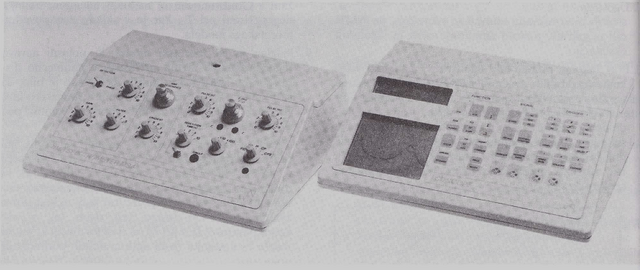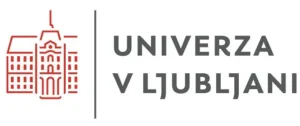1985-1989
Year 1985
In 1985, the following laboratories were operating in the Department of Condensed Matter Physics:
- Nuclear Magnetic Resonance Laboratory,
- Biophysics Laborator,
- Laser Light Scattering Laboratory,
- Dielectric Spectroscopy Laboratory,
- Ultrasound Spectroscopy Laboratory,
- NMR Tomography Laboratory.
Three applied research groups were still active within the Department:
- research group for the application of ferroelectrics,
- research group for the application of liquid crystals,
- research group for the utilization of NMR.
In this year, an independent electron microscopy laboratory joined the Department and research began in the fields of quantum optics and molecular electronics.
This was the year of the first studies related to quantum optics and molecular electronics, to spatial electron paramagnetic resonance, which completed the NMR tomography method, and to fractal systems.
The most important results of the 1985 studies were:
- discovery of isotope effect when a proton is replaced with a deuteron in mixed ferroelectric and antiferroelectric pseudo-spin glasses, and development of a tunneling model of pseudo-spin glasses which described these effects,
- explanation of temperature and frequency dependence of nuclear spin-lattice relaxation of rubidium and deuterium in “proton” glasses with a fractal model of energy surface in these systems,
- determining the distribution of “percolation” clusters in “proton” glasses and of fluctuation clusters in ferroelectrics with the use of quadrupole disturbed nuclear magnetic resonance,
- determining the temperature dependence of soliton density in a number of incommensurate systems,
- determining the dependence of band gap in phason spectrum in substitutionally disordered incommensurate systems,
- discovery of new structural phase transitions in supraionic proton conductors,
- measurement of electron spin-lattice relaxation times of radiation defects in ferroelastics, and research of crystal lattice dynamics,
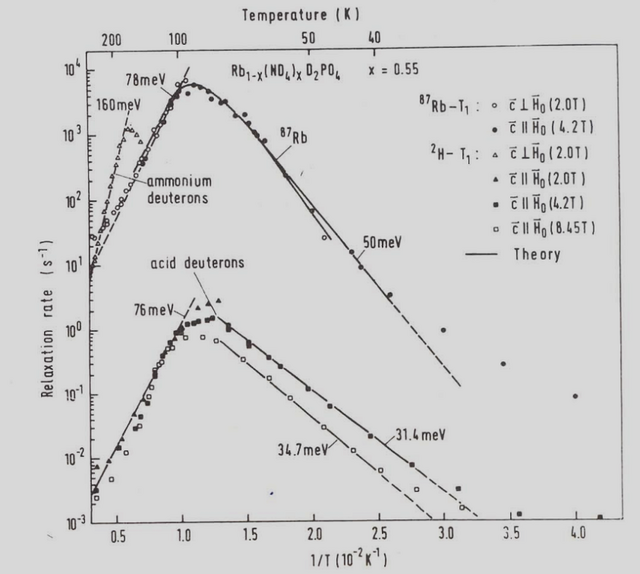
- introduction of a new method for duplication of objects using electron spin resonance,
- discovery of a new technique for inscribing information about spatial flow distribution into a phase of free precession signal for clinical NMR tomography, and research of turbulences in hydrodynamics,
- development of two new NMR methods for measuring homonuclear couplings, and improvement of measurements of small quantities of oil in seeds and other biological samples,
- determining elastic constants of lyotropic liquid crystals with discotic micelles,
- development of a simple device for NMR imaging of objects in earth magnetic fields and continuation of development of an apparatus for NMR tomography in high field.
In the field of biophysics, models for evaluation of the spectra of molecules bound to membranes in the presence of specific and nonspecific binding areas were developed; the impact of temperature and buffer selection on the level of molecular aggregation and distribution of the molecules between the solution and the membrane was determined; the role of free radicals in the process of oxidation of ascorbate with oxygen was measured and proven; the method of electron paramagnetic resonance with the use of magnetic field gradient was introduced for the research of molecular diffusion in tissues.
Microstructural studies of thin layers and defects in crystals resulted in determination of the connection between incommensurate superstructures NbTe4 at and below room temperature, determination of defect structure of reduced CaUO4 and explanation of the reduction mechanism, explanation of orientational difference in epitaxial double layers using the analysis of reflexes caused by birefringence, determination of conditions for epitaxial growth of α-SnO, and discovery of the epitaxial growth of high-pressure modification of SnO2 at epitaxial oxidation of α-Sno.
A special mention in 1985 goes to the development of new ferroelectric liquid crystals that are stable at room temperature, and to the applied research in the field of liquid crystals which resulted in the production of liquid-crystal displays in Iskra IEZE, the only manufacturer of LC displays in the ex-Yugoslavia. These studies also led to the replacement of cathode screen with LC screen in the digital computer-controlled oscilloscope manufactured by Iskra Kibernetika.
Studies of ferroelectrics and pyroelectrics led to the production of infrared detectors, ferroelectric optical switches, ultrasonic defectoscopes, and to construction of flowmeters. For the needs of Salonit Ahnovo company, a pulsed NMR analyser of cement hydration was built based on the research of magnetic resonance and relaxation. Applied research was also carried out in the field of optical displacement encoders.
As every year, the Department cooperated with various international institutions, organisations and universities. The studies included cooperation with the USSR Academy of Science, Karl-Marx University of Leipzig, Max-Planck Institute of Heidelberg, Democritos Nuclear Institute of Athens, and some American institutions, namely the Kent State University, Liquid Crystal Institute and the National Bureau of Standards in Washington.
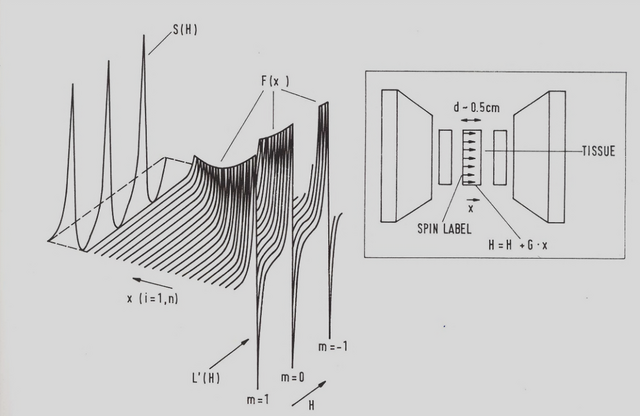
Year 1986
In 1986, the following laboratories operated within the Department of Condensed Matter Physics:
- Nuclear Magnetic Resonance Laboratory,
- Biophysics Laboratory,
- Quantum Optics Laboratory,
- Dielectric Spectroscopy Laboratory,
- NMR Tomography Laboratory.
Three applied research groups still existed within the Department:
- research group for the application of ferroelectrics,
- research group for the application of liquid crystals,
- research group for the utilization of NMR.
The work of the independent electron microscopy and surface physics laboratory must also be mentioned.
In 1986, the researchers at the Department were mostly interested in the research of:
- ferroelectrics and liquid crystals,
- disordered systems and systems with fractal geometry,
- incommensurate systems,
- polymers and membranes,
- quantum optics,
- molecular electronics,
- microstructure of thin layers and defects in crystals,
- biophysics of membranes, specifically the binding of molecules to membranes and the transport of molecules through membrane.
New subjects in which the researchers were interested were:
- stimulated Raman scattering,
- time-resolved laser spectroscopy,
- thermochromic and photochromic systems, which are important for molecular electronics using 17O nuclear quadrupole double resonance,
- soliton interactions using dielectric spectroscopy in a strong external electric field,
- development of EPR tomography and NMR tomography in earth magnetic field, where the achieved resolution was 2 mm,
- ferroelectric polymers of the PVF2 type.
The most important results achieved in 1986 were:
- development of a new NMR method for determination of random fields in pseudo-spin glasses, which enabled the determination of the Edwards-Anderson order parameter in these systems using NMR line-shape measurement,
- proof of the fractal nature of cement gel discovered using NMR relaxation, and development of a model which described the cement solidification percolation threshold,
- discovery that random fields, which occur in pseudo-spin glasses because of the substitutional disorder of these systems, distort the phase transition in these systems similarly to how electric fields distort phase transition from paraelectric to ferroelectric phase,
- indication that glass might not be simply a super-cooled liquid, and that there is a thermodynamic phase transition form supercooled-liquid phase to glass phase, which, because of the long relaxation times, cannot be noticed in the equillibrium properties of a system, only in its relaxation phenomena.
In 1986, the existence of ordered phase clusters in the disordered phase of hydrogen-bonded ferroelectric KH2AsO4 was also confirmed, the mechanism and microscopic nature of superionic conductivity in some proton superionic conductors was determined, a new model of ferroelectric liquid crystals was confirmed with measurements of static critical properties, and the Goldstone excitation was discovered in the spectrum of ferroelectric liquid crystals with the use of dielectric relaxation spectroscopy.
Important discoveries and achievements were also made in the field of biophysics. The studies of lipid-protein interactions led to the determination of segmental movements and the discovery of the role of binding sites for fatty acids in the process of denaturation of serum albumin. Conformational changes in the active site of glyceraldehyde 3-phosphate dehydrogenase were measured as a result of hydrophobic ligand binding in the second site of the enzyme molecule. Studies of the structure and function of membranes resulted in models which could explain the influence of membrane properties on the speed of reactions coupled by the transfer of matter through membranes,the diffusion of spin-labeled molecules in dental cement was also researched, the influence of laser-light pulses on the fluidity of erythrocyte membranes was measured, andthe respiration speed of isolated mitochondria was continuously measured using spectroscopy and spin-labelling method.The research of cells and nitroxide metabolism provided measurements of characteristics of cells in suspension according to the speed of reduction of labels and the inhibitory role of oxygen, which was of great importance for the use of nitroxides as a contrasting agents in NMR tomography. A model was developed to study the role of superoxide radical in explanation of kinetics of ascorbate oxidation reactions with the help of nitroxide radicals, andnew methods were developed to characterise transport parameters of mold with special attention paid to biotechnical applicability.
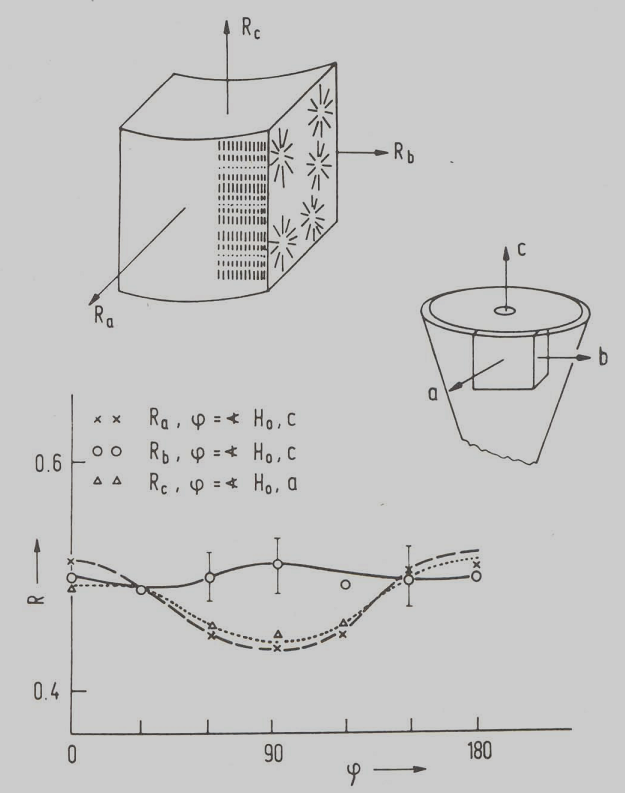
Among research on electron-microscopy in 1986, it is worth noting the research of crystals with modeled structure and the research of microstructure of thin layers – in this field, the year 1986 mareked the beginning of new studies of structural changes, which were useful for laser data writing.
The above research served as the basis for applied and developmental research, such as the cooperation with Salonit Ahnovo, which led to studying of thixotropy of cement layers and developmental research of thin-film thermocouples – the thermopower achieved in the PbTe-Au couples was practically equal to the termopower values of single crystals. Applied research was also carried out in the fields of liquid crystals, ferroelectrics and thin films for the needs of the electronic industry. The research on the use of NMR in agronomy, medicine and building industry also deserve a special mention.
Applied research of the development of new liquid crystals allowed for a much better resolution and information density than traditional liquid-crystal displays. These studies led to production of new LC displays with a wide temperature range in Iskra IEZE and to replacement of the cathode screen with an LC screen in the computer-controlled digital oscilloscope made by Iskra Kibernetika. A new type of optical displacement and rotary encoders was developed for Iskra Avtomatika. Research of ferroelectrics resulted in production of infrared detectors for DO Varnost, as well as of ultrasound defectoscope and flowmeters for Iskra Kibernetika and Teh Projekt.
In 1896, the Department of Condensed Matters Physics participated in various international collaborations. An American-Yugoslav scientific and technical project was carried out (in collaboration with Kent State University, National Bureau of Standards and Carnegie-Mellon University). The Department also collaborated with the USSR Academy of Science, ETH Zürich, LASIR, CRNS from France, Max-Planck Institute of Heidelberg, Democritos Nuclear Institute of Athens, Karl-Marx University of Leipzig, Waterloo University of Canada and Technical College from Sweden. These are only some of the ccollaborations of the Department and show the quality of the research and the ability for international cooperation of the Condensed Matter Physics and of the Jožef Stefan Institute.
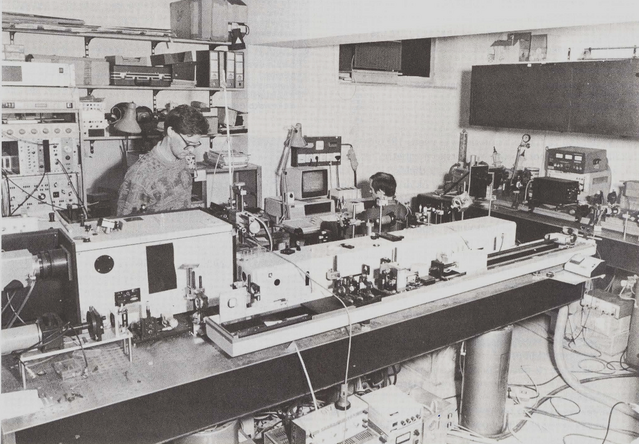
Year 1987
In 1987, the following laboratories operated within the Department of Condensed Matter Physics:
- Nuclear Magnetic Resonance Laboratory,
- Biophysics Laboratory,
- Quantum Optics Laboratory,
- Dielectric Spectroscopy Laboratory,
- NMR Tomography Laboratory.
The Department still supported three applied research groups:
- research group for the application of ferroelectrics,
- research group for the application of liquid crystals,
- research group for the use of NMR.
The work done by the independent electron microscopy and surface physics laboratory should also be mentioned.
In the newly built laboratories of the Centre for Science and Technology, financed by Iskra Avtomatika, Iskra Kibernetika and Iskra Centre for Electro-optics, the research results started to be put into practice.
The research in 1987 was mostly focused on:
- research of ferroelectrics and liquid crystals,
- research of incommensurate systems and proton glasses,
- research of biopolymers and membranes,
- research of quantum optics,
- research of molecular electronics,
- research of microstructure of thin layers and defects in crystals,
- research of membrane biophysics, specifically the binding of molecules to membranes and the transport of molecules through membranes.
In this year, the first research on high-temperature ceramic superconductors using light scattering and electron paramagnetic resonance was conducted in collaboration with the Department of Chemistry.
The most important research results in 1987 were:
- determination of gapless phason dispersion relation in a ferroelectric crystal DOBAMBC with the use of light scattering,
- determination of the Edwards-Anderson order parameter in deuteron glasses with ND nuclear resonance,
- discovery of continuous phase transitions from the isotopic to the nematic phase in nematic microdroplets dispersed in polymers,
- determination of phason excitations and soliton density with 39K NMR in incommensurate K2SeO4,
- determination of interaction potential between solitons with the use of the dielectric method.
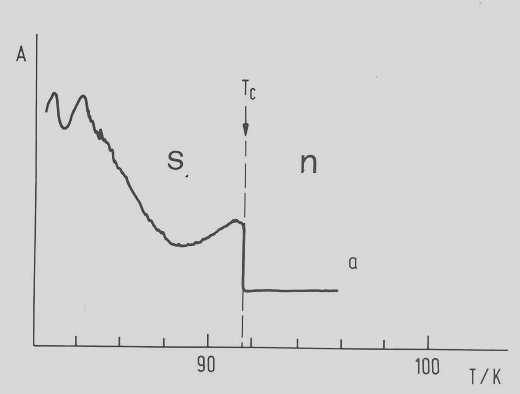
In the domain of biophysics, the following results were the most important:
- development of new methods for imaging the distribution and transport of molecules in biological tissues using the electron paramagnetic resonance and EPR tomography,
- characterisation of redox systems in biological cells, specifically the role of free radicals, oxygen and endogenous substrates,
- measurement of segmental protein movement in the process of partial denaturation.
The most prominent achievements of structure and defect research in crystals and thin layers:
- determination of mechanism of domain boundary formation in the process of transformation of NbTe4 into the low-temperature phase,
- determination of the nature of incommensurate distortions in Yb3-xS4 crystals,
- determination of commensurate and incommensurate superstructure of two NbS3 modifications.
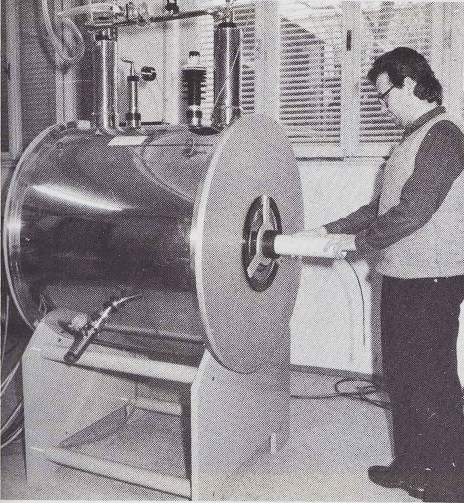
The above mentioned studies were followed by applied research, which in 1987 resulted in the construction of a new type of liquid-crystal optical displays operating on the basis of scattering of nematic microdroplets dispersed in polymers. An electrically controlled colour filter, protected by an American patent, was also developed on the same basis, which enabled a new type of colour photography and projection colour televisions. The research on ferroelectric liquid crystals led to the construction of very fast optical displays and to the development of an optical computer with parallel data processing, which enabled the capacity of several terabits per second. The research of ferroelectric ceramics resulted in the construction of very fast optical switches and new types of pressure, temperature and infrared radiation sensors. The research also led to the implementation of a new type of optical displacement encoder in the production of Iskra Avtomatika. In Iskra Centre for Electro-optics, an OTDR – optical time-domain reflectometer – started being produced, and in Iskra Kibernetika, a new line of “iskrascopes” compatible with IBM PC were being constructed. In Iskra Elementi, the production of improved liquid-crystal displays based on nematic “supertwist” was started, and a trial laboratory series of strain gauges for measuring strain was produced.
The Department also shared its achievements internationally. We should mention the American-Yugoslav scientific and technical collaboration project, collaboration with the Soviet Academy of Science, ETH Zürich, LASIR, the French CRNS, the Max-Planck institute of Heidelberg, the Demokritos of Athens nuclear institute, Waterloo University of Canada, Karl-Marx University of Leipzig, and Technical College from Sweden. Other collaborations included the Urbana University of Illinois, Utah University, Australian National University and Minsk University, as well as the Biochemistry Institute of the German Centre for Cancer Research in Heidelberg, and the Department of Physics and Biochemistry at the Moscow National University.
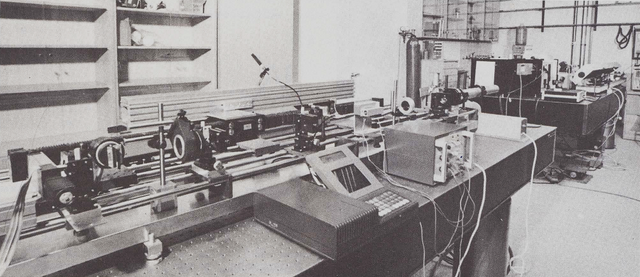
Year 1988
In 1988, the following laboratories operated within the Department for Condensed Matter Physics:
- Nuclear Magnetic Resonance Laboratory,
- Biophysics Laboratory,
- Quantum Optics Laboratory,
- Dielectric Spectroscopy Laboratory,
- NMR Tomography Laboratory.
The Department still supported three applied research groups:
- research group for application of ferroelectrics,
- research group for application of liquid crystals,
- research group for utilisation of NMR.
The work of the independent electron microscopy and surface physics laboratory shouldalso be noted.
The main research subjects in 1988 were:
- ferroelectrics and liquid crystals,
- partially ordered systems, especially incommensurate systems and proton and deuteron glasses,
- new methods of nuclear and electron magnetic resonance,
- quantum optics and optical characteristics of high-temperature superconductors,
- molecular electronics, especially photochromic and thermochromic systems,
- membrane and tissue biophysics, especially transport processes and reactions coupled with transport,
- microstructure of thin layers and defects in crystals.
New discoveries and acievements in 1988 included:
- development of a new method of space-resolved EPR spectroscopy for characterisation of processes in biosystems and for measuring the transport of active ingredients,
- characterisation of thin films based on high-temperature superconductors,
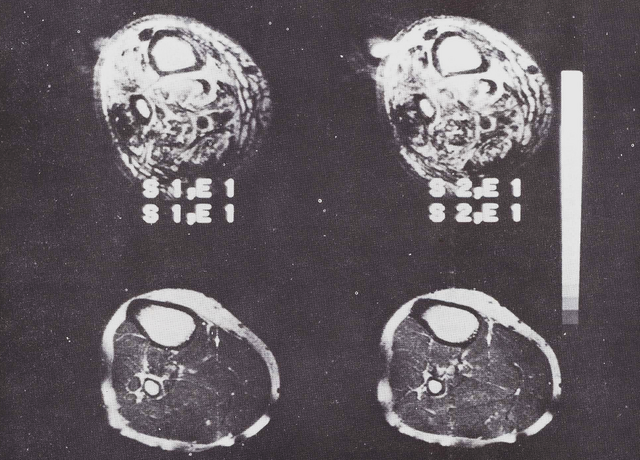
- first use of the first NMR tomograph in ex-Yugoslavia with spatial resolution was up to 0.2 mm. It was used to research early stages of arthritis, to observe the progress of diabetes, for embryological research, for pathophysiological research, for research of fibrinolysis of blood clots, and for researching nonequilibrium phase transitions in liquid crystals, gels and polymer melts. The project was executed with cooperation of doctors from the University Medical Centre of Ljubljana, the Pathophysiological Institute, the Institute for Rehabilitation and of the experts from the Ljubljana Faculty of Electrical Engineering, the Biotechnical Faculty and the Faculty of Physical Culture.
The most important achievements of the research conducted in 1988 were:
- development of a new method to determine distribution of local polarisation and order parameter in pseudo-spin glasses, dipolar glasses and quadrupolar glasses,
- determination of order parameter fluctuations in ferroelectric liquid crystals using light scattering,
- discovery of frequency-dependence of the spin-spin relaxation time T2 in incommensurate systems,
- development of a new NMR method to determine fractal dimensions of gels,
- development of a new method to determine the rotational viscosity coefficient in ferroelectric liquid crystals with the use of dielectric spectroscopy,
- determination of the dynamics of order parameter fluctuations in polymer-dispersed liquid crystals,
- determination of the nature of ferroelectric phase transition in the monoacidic RbD2PO4, in which the transition from antiferroelectric to ferroelectric phase and the extended Kittel model of antiferroelectricity were first discovered.
The following memorable achievements were reached in the field of biophysics:
- a method of scavenging short-lived radicals with spin scavengers was developed,
- a new method was developed for determining oxygen distribution in tissue using the two-dimensional imaging with electron paramagnetic resonance, and the dynamic of tissue oxygenation was determined,
- a new method was constructed to study the diffusion of active ingredients in solutions, gels and skin, and the correlation between rotational and translational diffusion was measured in gels with different structures that served as model systems for carriers of applied substances.
The major results of research on structure and defects in crystals and thin layers were:
- determination of symmetry of modelled structures TaTe4 and Au2+xCd1-x,
- preparation of new multi-layer standards for calibration of depth profiles for different methods of surface analysis,
- preparation and characterisation of TiN and ZrN layers for diffusion barrier and resistance layers in microelectronics.
Applied research based on the above research results led to the construction of a new type of super-twisted nematic liquid-crystal displays with a high information density, which were suitable for computer terminals. Some of the liquid-crystal elements for an optical computer model were also produced. A completely new type of infrared detectors based on pyroelectric crystals was developed, as well as a new line of NMR mini-spectrometers with ferrite magnets, which were a couple of times cheaper than comparable systems available on the international market. In addition, a new type of computer-controlled flowmeters was developed. Methods of production of new types of optical displacement encoders were improved in cooperation with Iskra Avtomatika. Work began on the MEIUS (Modular electro-optical intelligent management system) Project, which included 52 partners from all republics and regions of the ex-SFRJ except for Kosovo and Montenegro.
The international collaboration of the Department of Condensed Matter Physics in 1988 included the American-Yugoslav scientific and technological collaboration project, collaboration with the Soviet Academy of Science, ETH Zürich, Max-Planck Institute of Heidelberg, the nuclear institute Demokritos of Athens, Waterloo University of Canada, Karl-Marx University of Leipzig, and Technical College from Sweden. Other collaborations included the Urbana University of Illinois, Utah University, and Wroclaw University in Poland, as well as the Biochemistry Institute of the German Centre for Cancer Research in Heidelberg, and the Department of Experimental Physics at the Vienna University.
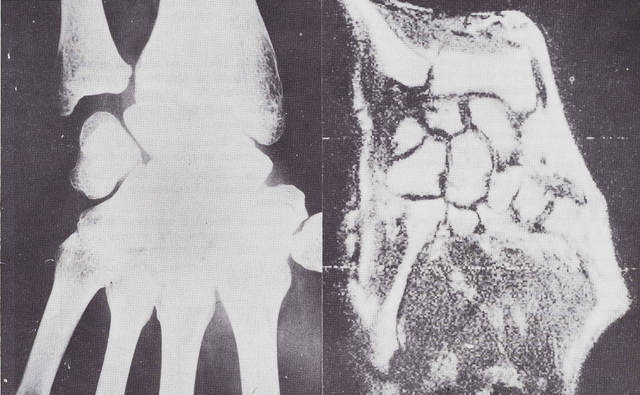
Year 1989
In 1989, the following laboratories operated within the Department for Condensed Matter Physics:
- Nuclear Magnetic Resonance Laboratory,
- Biophysics Laboratory,
- Quantum Optics Laboratory,
- Dielectric Spectroscopy Laboratory,
- NMR Tomography Laboratory.
The Department still supported three applied research groups:
- research group for application of ferroelectrics,
- research group for application of liquid crystals,
- research group for the use of NMR.
The work of the independent electron microphysics and surface physics laboratory deserves a special mention.
The work from the previous years was bulit upon and the research results were used in practice in the newly built laboratories of the Centre for Science and Technology.
In 1989, the research focused on:
- ferroelectrics,
- liquid crystals and composite systems, notably polymer-dispersed liquid crystals,
- physics of partially ordered systems and proton and deuteron glasses,
- new methods of nuclear and magnetic resonance,
- quantum optics and optical characteristic of high-temperature superconductors,
- membrane and tissue biophysics, especially of transport processes and reactions coupled with transport,
- microstructure of thin layers and defects in crystals.
Many important findings were made in 1989:
- The research of proton and deuteron glasses, which are the model systems for studying the nature of glass transition, led to the development of a new method, which allows us to determine the distribution function of local polarisation and its second moment (Edwards-Anderson order parameter), using NMR measurements of non-homogeneous spectral distribution.
- It was discovered that in incommensurate systems T2 is not a constant, but depends on the NMR line and reflects the density of amplitudon and phason excitations.
- In incommensurate systems with 4- or 6‑component order parameter, one can use the NMR to determine the phases of individual modulation waves and to uniquely determine which of the possible basic states is realised in a given crystal.
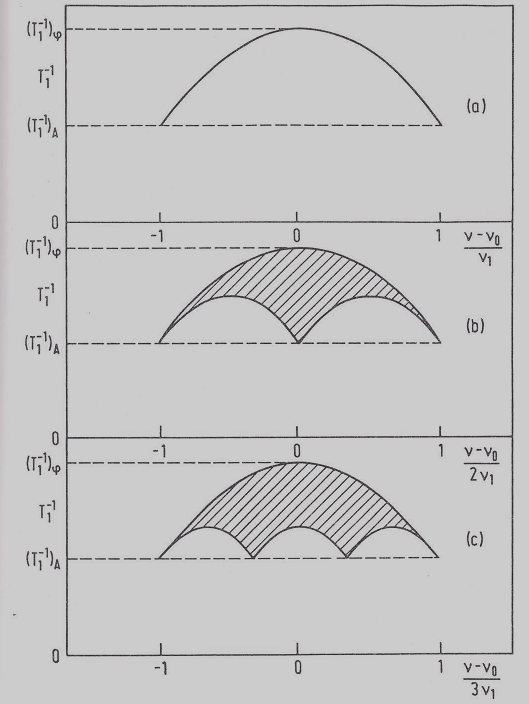
Fractal geometry of fibrin gel was described with the use of the NMR.
- A new method of determining rotational viscosity in ferroelectric liquid crystals was introduced.
- A theoretical model was constructed to explain the nature of liquid-crystal phase transition in polymer-dispersed liquid crystals.
- A pseudo-spin model was developed to describe the antiferroelectric order-disorder phase transition in KSCN.
- A new device for nuclear magnetic resonance photos (MRI) was used to research embryonic development of vertebrates and changes in athletes’ muscles in collaboration with doctors and biologists. It was discovered that with the MRI, it is possible to diagnose various types of polyarthritis in the early stages, characterize muscular dystrophy, and detect blood clots and their dissolution.
The following important achievements were reached in the field of biophysics:
- development of a model to describe fluctuations of molecules, which are embedded into erythrocyte membranes, and research of the influence these fluctuations have on the reaction speed of the embedded molecules,
- research of the unstable phases of aggregate systems of amphiphilic molecules of glycine esters and water,
- experimental optimisation of forms and structural features of liposomes to accelerate the transport of active ingredients into the skin.
The research on modeled structures as well as microstructures and characteristics of thin layers was continued, and research on defects in silicon began in order to study the problems of interior gettering.
All these studies were used in applied research on new construction materials for Salonit Ahnovo and in research on structural features of materials for thin film resistors and sensors for Iskra IEZE.
The research and achievements were part of the American-Yugoslav scientific and technical project and of other collaborations, such as with the Soviet Academy of Science, West Germany, Italy, Canada, Poland, Sweden, Greece and the USA.
The results were presented to the international professional/expert public in various journals and in the form of lectures at international and Yugoslav universities and congresses, notably at the international meeting “Workshop on Selected Problems in Crystal Growth and Material Sciences,” which was organised by the Department and took place at the Institute from 10 to 14 December 1989. In the same year, the Department also organised a programme for functional education of young researchers, which allowed them to learn about new techniques in physics, new breaking-edge technologies, computer sciences and automatics, as well as the use of computer programs on PC.
